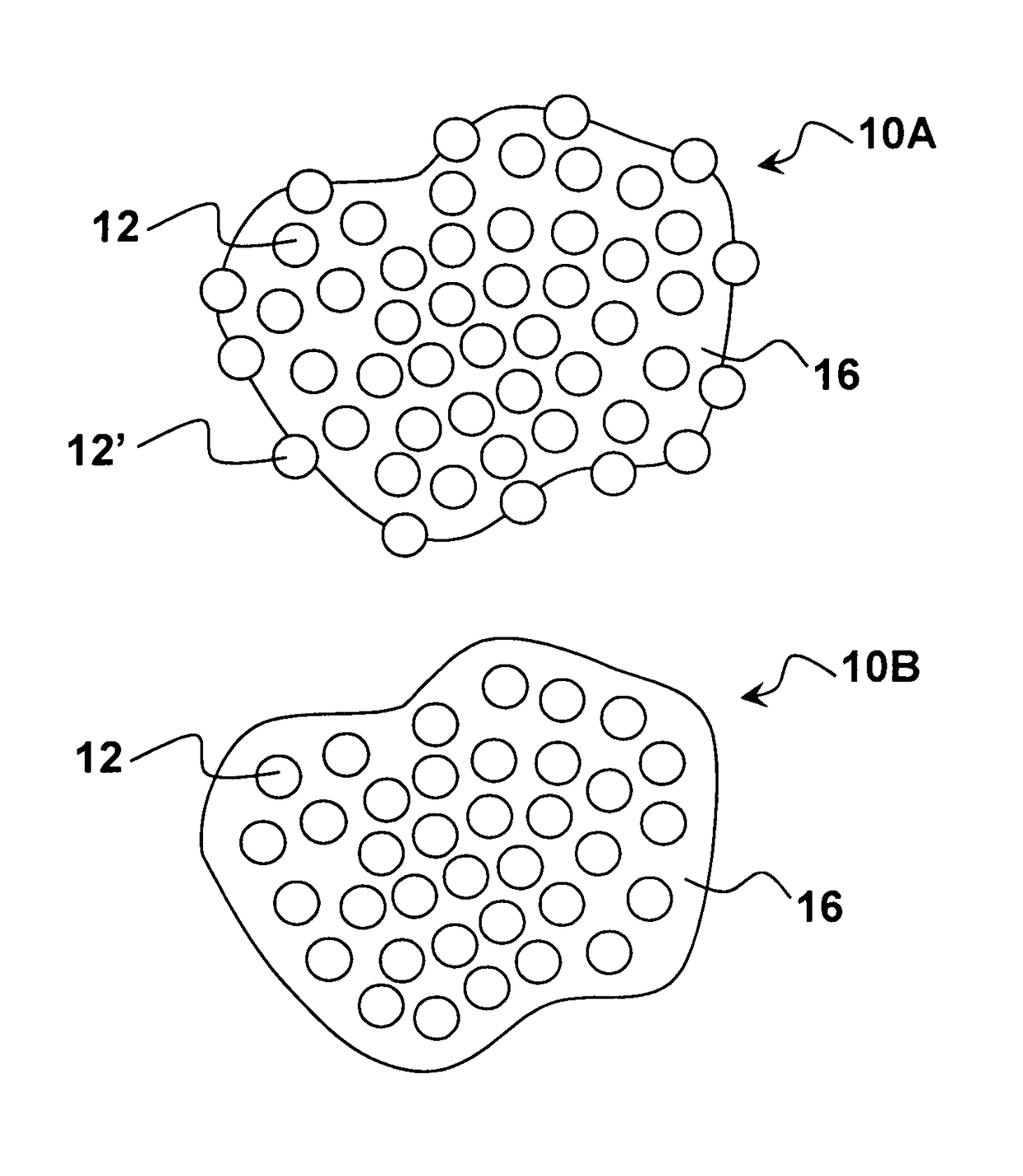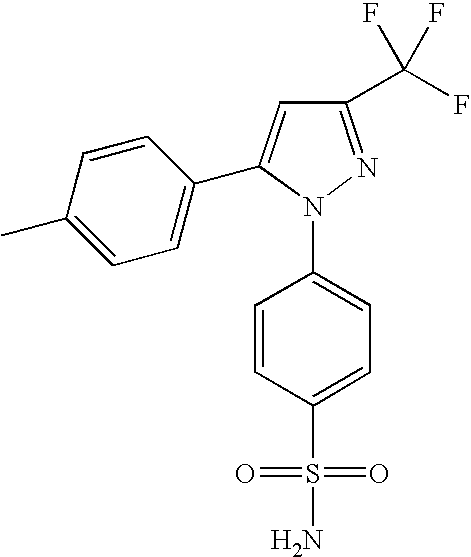Pharmaceutical compositions comprising nanoparticles and a resuspending material
a technology of nanoparticles and resuspending materials, which is applied in the direction of drug compositions, biocide, synthetic polymeric active ingredients, etc., can solve the problems of nanoparticles often agglomerating or aggregating, adverse physiological effects of materials, and decrease in performance and stability, so as to improve performance and stability, prevent irritation of the stomach, and rapidly produce nanoparticles
- Summary
- Abstract
- Description
- Claims
- Application Information
AI Technical Summary
Benefits of technology
Problems solved by technology
Method used
Image
Examples
example 1
[0124]For Example 1, nanoparticles containing Drug 1 were prepared as follows. First, 2.4 g Drug 1 and 3 g ethylcellulose were dissolved in 50 mL methylene chloride to form an organic solution. Next, 0.6 g sodium taurocholate (NaTC) was dissolved in 150 mL deionized water to form an aqueous solution. The organic solution was then poured into the aqueous solution and emulsified for 5 min using a Kinematica Polytron 3100 rotor / stator (Kinematica AG, Lucerne, Switzerland) at 10,000 rpm (high-shear mixing). The solution was further emulsified using a Microfluidizer (Microfluidics [Newton, Mass.] model M-110S F12Y with ice bath and cooling coil), for 15 minutes (high-pressure homogenization). The methylene chloride was removed from the emulsion using a rotary evaporator, resulting in an aqueous suspension of nanoparticles, with a composition ratio of 4:5:1 Drug 1:ethylcellulose:NaTC.
Light Scattering Analysis
[0125]The particle size of the nanoparticles in the aqueous suspension was determ...
example 2
[0132]For Example 2, an aqueous nanoparticle suspension containing Drug 1 was prepared as described for Example 1. A solid composition of the invention was formed by spray drying the nanoparticle suspension together with the sodium salt form of HPMCAS-L, Fraction 4. To fractionate the HPMCAS, 10 g HPMCAS was added to 200 mL acetone and stirred. To isolate fraction 1, 100 mL water was added, the solution was centrifuged at 15,000 rpm for 3 minutes, and the solid precipitate (Fraction 1) was removed. To isolate Fraction 2, an additional 50 mL water was added to the solution and centrifuged, and the precipitate (Fraction 2) removed. Fraction 3 was obtained by further adding 50 mL water to the solution (for a total of 200 mL water and 200 mL acetone solution), and centrifuging to remove the precipitate (Fraction 3). Finally, Fraction 4 was obtained by removing the liquids by roto-evaporation, dissolving the resulting solids in acetone, and precipitating the solution in hexane to form la...
example 3
[0140]For Example 3, an aqueous suspension of nanoparticles containing Drug 2 were prepared using the procedures outline in Example 1 with the following exceptions. The organic solution consisted of 160 mg Drug 2 and 160 mg ethylcellulose dissolved in methylene chloride, while the aqueous solution consisted of 80 mg NaTC was dissolved in 20 mL deionized water. The organic solution was then poured into the aqueous solution and emulsified for 3 min using high-shear mixing. The solution was further emulsified for 6 minutes using high-pressure homogenization. The methylene chloride was removed from the emulsion using a rotary evaporator, resulting in an aqueous suspension of nanoparticles, with a mass ratio of 2:2:1 Drug 2:ethylcellulose:NaTC.
Light Scattering Analysis
[0141]The particle size of the nanoparticles in the aqueous suspension was determined using dynamic light scattering (DLS) as described above. The average cumulant diameter was found to be 106 nm, with a polydispersity of 0...
PUM
| Property | Measurement | Unit |
|---|---|---|
| solubility | aaaaa | aaaaa |
| wt % | aaaaa | aaaaa |
| size | aaaaa | aaaaa |
Abstract
Description
Claims
Application Information
 Login to View More
Login to View More - R&D
- Intellectual Property
- Life Sciences
- Materials
- Tech Scout
- Unparalleled Data Quality
- Higher Quality Content
- 60% Fewer Hallucinations
Browse by: Latest US Patents, China's latest patents, Technical Efficacy Thesaurus, Application Domain, Technology Topic, Popular Technical Reports.
© 2025 PatSnap. All rights reserved.Legal|Privacy policy|Modern Slavery Act Transparency Statement|Sitemap|About US| Contact US: help@patsnap.com



